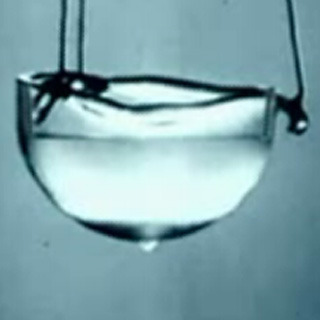Superfluidity
Superfluidity is the phase in which a fluid exhibits frictionless flow. The fluid’s viscosity vanishes and the thermal conductivity becomes infinite during this phase. This is possible because some liquids overcome friction when interacting with surfaces when the fluid’s viscosity is zero. Zero viscosity makes it possible for a fluid to have a very unique motion, which is yet to be fully understood or exploited.
Properties of Superfluids
Superfluidity allows matter to be in a state where a two fluid model can exist. This means that mass can be transferred without energy. The superfluid does not have to conform to the nature of normal fluid matter. Superfluids tend to boil without bubbles and may show very unique characteristics once the temperature begins to rise. Superfluids cannot be trapped because their ability to overcome friction allows them to overflow their containers. A superfluid that comes in contact with a normal fluid will simply leave the normal fluid behind for three main reasons:
- The fluids are incompatible and therefore cannot mix.
- The superfluid matter rolls over the fluid matter without friction through capillary force.
- Sound waves are used to determine where the atoms can move without causing a loss of energy.
The capillary force is done at a one atom thick layer, which rolls over any surface due to superfluids’ unique characteristics.
One of the bizarre properties of superfluids such as Helium II is the fact that superfluidity actually allows the superfluid to creep along surfaces to find its own level. Equalization and equilibrium between the amount of Helium II superfluid and its containers is simple to adjust and maintain. This is only possible in an enclosed container as the superfluid helium would escape the confines of the larger container to level out with the external forces.
This bizarre property continues until the Helium II completely evaporates as it heats up. The Helium II remains a superfluid for a very long time because of how cold it stays, especially when the outermost layers are rapidly expanding and causing it to cool itself down.
Applications of Superfluidity
A form of superfluid helium-4 has been used as a quantum solvent in spectroscopic techniques. This was performed with Superfluid Helium Droplet Spectroscopy or SHeDS and can be used as a “gas” phase fluid at a single molecule size. The molecule’s rotational freedom is of high interest due to this unique fact about its nature.
Superfluids are used in devices like gyroscopes, which need to have high precision in theoretically predicted gravitational effects to perfect the technology. Gravity Probe B was a project conceived in 1959 that has used options such as superfluid helium to determine the space-time curvature near earth.
Superfluids have also been used to trap and significantly reduce the speed of the light. For example, light was passed through a Bose-Einstein condensed superfluid sodium gas and slowed to 17 meters per second. Light ordinarily travels at 299,792,458 meters per second in a vacuum. This amazing spectacle that Lene Hau performed in 1999 caused the speed of light to be reduced by 299,792,441 meters per second, by trapping it in the superfluid sodium.
Superfluid helium was also used in the IRAS (Infrared Astronomical Satellite) as a cooling component. The 720 liters on board the satellite maintained a temperature of -271.4 degrees Celsius or -456.52 degrees Fahrenheit. This was used to collect infrared data where the temperatures from unfiltered radiation are much higher than the earth’s.
Modern Day Superfluid Developments
The BEC and BCS crossover is a modern superfluid development. Fermionic atoms were made ultra cold to create a Bose-Einstein condensation that is superfluid. Superconducting electrons that came from fermions formed Cooper pairs that are also superfluid. These are both available at super cold extremes and have really drawn attention to the properties of the BEC and BCS crossover phenomenon, which was unheard of before the 2000s.
What are Superfluids Good for?
They are really something new to experiment with as they have so many properties that are yet to be discovered. The application of superfluids is still being investigated, with much of the research focused on simply creating them. Understanding their limits and making new discoveries is not possible without first understanding how superfluidity works.


Comments - No Responses to “Superfluidity”
Sorry but comments are closed at this time.